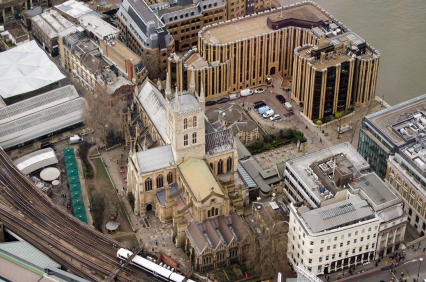 Being the capital of one of the strongest economies in the world, it is not surprising that London attracts thousands of jobseekers every year, who arrive in the British capital hoping to give a boost to their career by landing a position in the city. According to a March 2013 report published by local London newspaper The Evening Standard, the official unemployment rate in the city is at a four-year low, and currently stands at 7.8 per cent. Data collected by the Greater London Authority show that during 2013, the total number of jobs available in the city has increased by 3.9 per cent when compared to the previous year.
Being the capital of one of the strongest economies in the world, it is not surprising that London attracts thousands of jobseekers every year, who arrive in the British capital hoping to give a boost to their career by landing a position in the city. According to a March 2013 report published by local London newspaper The Evening Standard, the official unemployment rate in the city is at a four-year low, and currently stands at 7.8 per cent. Data collected by the Greater London Authority show that during 2013, the total number of jobs available in the city has increased by 3.9 per cent when compared to the previous year.
London is also the most popular UK city for graduates who are in search of their first job. This trend has been specially notorious since the economic recession hit, according to the Higher Education Careers Services Unit. But where exactly are the most popular jobs in London and what are the key trends for the near future? In this article we take a look at the most fruitful sources of employment in the British capital and at some interesting data about them.
Finance and banking
With hundreds of financial institutions from all over the world headquartered in London, the city naturally attracts jobseekers who are interested in pursuing a career in finance. The city’s status as a leading financial centre at international level is one of the main reasons why the finance job market in London escaped the worst of the recession. In May 2012, a survey carried out by the Centre for Economics and Business Research showed that financial jobs in the City were down by nearly 100,000 when compared to the pre-recession years. However, the sector has since stabilised and currently the number of finance jobs available is on the rise. Banking jobs have increased by 3.2 per cent, whereas the bulk of finance jobs available is 1.8 per cent higher than last year.
According to the Higher Education Careers Services Unit, approximately 66 per cent of all graduates who are currently working as financial analysts began their career in London. One thing is clear: the finance job market in London is changing, and while jobs some types of finance and banking are becoming scarce, there are new opportunities in areas like fund management and insurance.
Construction
Construction is a booming sector in London that has benefited from the celebration of the Olympic Games and from some large-scale infrastructure projects, like the Thames Tideway Tunnel or Crossrail, which will require large numbers of construction workers until 2019. All in all, there are nearly 700 ongoing construction projects around London. In the residential sector, there are more than 200,000 London homes with approved building permission. According to the Construction Skills Network, at the end of 2012 there were 260,000 people employed in the construction sector in Greater London.
However, the London Assembly Economy Committee has recently published a report affirming that there are important skills shortages in this particular labour market, especially when it comes to dry liners, glazers, plasterers, and building envelope specialists. These are the areas where the best paying constrution jobs can be found.
Hospitality
London is an industry leader in the hotel and catering industry, and according to some recent reports, the hospitality industry in the capital has outpaced the rest of the country and is showing growth levels that are higher than those of the pre-recession years. By 2020, it is expected that there will be 5,000 new hotel rooms in the city, in addition to the 8,000 that opened up on occasion of the Olympics.
Yet, the latest State of the Nation report shows that the city is experiencing critical skill shortages, especially when it comes to chefs and qualified hospitality managers. While vacancies for front of the house staff and waiting staff are always available in London, the highest paying hospitality jobs require at least a bachelor’s degree in a relevant field.
Retail
Retail is one of the most important contributors to the economy of London. According to data published at the London’s Economic Plan website, the retail industry employs more than 400,000 people, a figure that represents approximately 9 per cent of all jobs in Greater London. It is expected that within the next ten years, there will be a further 75,000 retail vacancies available in the city.
By far, the most popular retail jobs are to be found in specialist clothing stores, which employ 78,000 jobs across London. Next are food retail outlets, which provide more than 22,000 people, followed by outlets selling electrical goods, books, and furniture, in which more than 10,000 people are employed.






